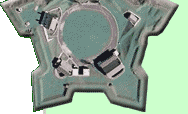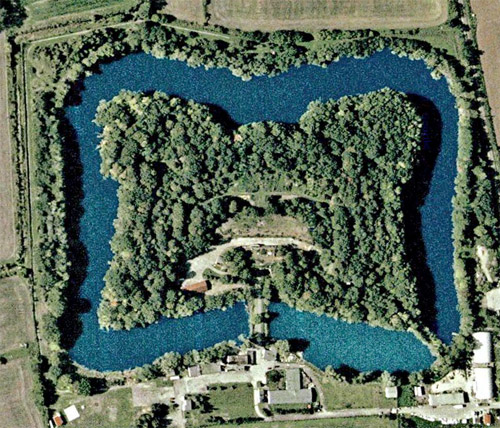
 |
 |
Fort Gorgast Gorgast, Germany |
 |
 |
 |
 |
 |
||
 |
Fort Gorgast was built from 1883 to 1889 as part of the extended fortifications of Kostrzyn, a city that sits at the confluence of the Oder and Warta Rivers and was, at the time, the largest railway hub in Prussia. Gorgast was one of four forts built to buttress Kostrzyn's defenses (the others being Saepzig, Tschernow and Zorndorf) in Germany's modernization spurt after the Franco-Prussian War (1870-1871). France had occupied Kosterzyn during the Napoleonic Wars (1803-1815), burning the town on their way out in 1814: It was due to this memory, plus German fears of a Franco-Russian alliance, that Kosterzyn was so heavily fortified at the end of the 19th century. Fort Gorgast was designed to control the west bank of the Oder with a garrison of 310 (up to 250 soldiers and 60 artillerymen), preventing hostile approach from the east. An artesian well within the fort was a ready supply of water for the garrison, and remains operable today. Fort Gorgast was already relatively obsolete by the time of its completion, military technology and strategy having outstripped its construction, but was successfully used as a depot and barracks. Fort Gorgast escaped any damage from the First World War (1914-1918). Poland, having been partitioned, reconstituted and partitioned again through the 18th and 19th centuries, was finally made whole again as the 13th of US President Woodrow Wilson (1856-1924)'s Fourteen Points demanded. The German city of Kuestrin suddenly found itself called Kostrzyn, and on the Polish side of the border. Fort Gorgast also escaped major damage during the Second World War (1939-1945), even though Kostrzyn had the snot bombed out of it by the allies: 95% of Kostrzyn's buildings were flattened during the second war to end all wars. Fort Gorgast was in use as an auxilliary hospital when the Red Army rolled into the area in 1945. The Soviets shot it up a little and destroyed random parts of the fort with explosives, then calmed down and occupied it. The Soviets turned Fort Gorgast over to the newly (and joylessly) formed DDR shortly after the war. The German Commies used the fort as an ammunition depot, a place for the collection and disabling of the great piles of live ordnance left sprinkled around the countryside from the Battle of Seelow Heights (April 16-19 1945), in which the Red Army ploughed its way through the last German defenses protecting Berlin. One may note that the city of Kosterzyn now resides in Poland, Following the reunification of Germany on May 18 1990, the city of Gorgast gained ownership of the fort, and today the Fort Gorgast Association maintains it. The fort is the site of a museum, and regularly holds cultural meetings, festivals and exhibitions. Fort Gorgast is open to the public year 'round. |
 |
 |
||
|
|
|||||||
Info Source 1
Info Source 2
Info Source 3
Info Source 4 Info Source 5 Info Source 6 Info Source 7 Info Source 8 Info Source 9 Thanks to Google Maps for the image! ©2010 starforts.com |
 |